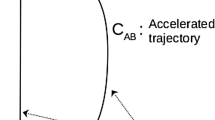In order to satisfy the equivalence principle, any non-conventional mechanism proposed to gravitationally explain the Pioneer anomaly, in the form in which it is presently known from the so-far analyzed Pioneer 10/11 data, cannot leave out of consideration its impact on the motion of the planets of the Solar System as well, especially those orbiting in the regions in which the anomalous behavior of the Pioneer probes manifested itself. In this paper we, first, discuss the residuals of the right ascension α and declination δ of Uranus, Neptune and Pluto obtained by processing various data sets with different, well-established dynamical theories (JPL DE, IAA EPM, VSOP). Second, we use the latest determinations of the perihelion secular precessions of some planets in order to put on the test two gravitational mechanisms recently proposed to accommodate the Pioneer anomaly based on two models of modified gravity. Finally, we adopt the ranging data to Voyager 2 when it encountered Uranus and Neptune to perform a further, independent test of the hypothesis that a Pioneer-like acceleration can also affect the motion of the outer planets of the Solar System. The obtained answers are negative.
Similar content being viewed by others
References
Anderson J.D., Laing P.A., Lau E.L., Liu A.S., Nieto M.M., Turyshev S.G. (1998). Phys. Rev. Lett. 81: 2858
Anderson J.D., Laing P.A., Lau E.L., Liu A.S., Nieto M.M., Turyshev S.G. (2002). Phys. Rev. D 65: 082004
Nieto M.M., Anderson J.D. (2005). Class. Quantum Grav. 22: 5343
Turyshev S.G., Toth V.T., Kellogg L.R., Lau E.L., Lee K.J. (2006). Int. J. Mod. Phys. D 15: 1
Turyshev S. G., Nieto M. M., and Anderson J. D., EAS Publication Series 20, 243 (2006b).
Dittus H., Turyshev S. G., Lämmerzahl C., Theil S., Förstner R., Johann U., W. Ertmer, Rasel E., Dachwald B., Seboldt W., Hehl F. W., Kiefer C., Blome H.-J., Kunz J., Giulini D., Bingham R., Kent B., Summer T. J., Bertolami O., Páramos J., Rosales J. L., B.Cristophe , Foulon B., Touboul P., Bouyer P., Reynaud S., Brillet A., Bondu F., Samain E., de Matos C. J., Erd C., Grenouilleau J. C., Izzo D., Rathke A., Anderson J. D., Asmar S. W., Lau E.E., Nieto M.M., Mashhoon B. (2005). ESA Spec. Publ. 588: 3
Murphy E. M. (1999). Phys. Rev. Lett. 83: 1890
Katz J. (1999). Phys. Rev. Lett. 83: 1892
Anderson J.D., Laing P.A., Lau E.L., Liu A.S., Nieto M.M., Turyshev S.G. (1999a). Phys. Rev. Lett. 83: 1891
Anderson J.D., Laing P.A., Lau E.L., Liu A.S., Nieto M.M., Turyshev S.G. (1999b). Phys. Rev. Lett. 83: 1893
Anderson J.D., Campbell J.K., Nieto M.M. (2007). New Astron. 12: 383
Will C.M. (2006). Living Rev Relativity, 9: 3 http://www.livingreviews.org/lrr-2006-3
Jaekel M.-T., Reynaud S. (2005a). Mod. Phys. Lett. A 20: 1047
Jaekel M.-T., Reynaud S. (2005b). Class. Quantum Grav. 22: 2135
Jaekel M.-T., Reynaud S. (2006a). Class. Quantum Grav. 23: 777
Jaekel M.-T., Reynaud S. (2006b). Class. Quantum Grav. 23: 7561
Brownstein J.R., Moffat J.W. (2006). Class. Quantum Grav. 23: 3427
Pitjeva E.V. (2005a). Sol. Sys. Res. 39: 176
Pitjeva E.V. (2005b). Astron. Lett. 31: 340
Pitjeva E. V., Limitations on some physical parameters from position observations of planets. Paper presented at 26th meeting of the IAU, Joint Discussion 16, #55, 22–23 August 2006, Prague, Czech Republic, (2006a).
Pitjeva E. V., Private communication, (2006b).
Anderson J.S., Lau E.L., Krisher T.P., Dicus D.A., Rosenbaum D.C., Teplitz V. L. (1995). Astroph. J. 448: 885
Anderson J.D., Turyshev S.G., Nieto M.M. (2002). Bull. Am. Astron. Soc. 34: 1172
E. L. Wright, Pioneer Anomalous Acceleration. http://www.astro.ucla.edu/˜ wright/PioneerAA.html, (2003).
Page G.L., Wallin J.F., Dixon D.S. (2005). Bull. Am. Astron. Soc. 37: 1414
Iorio L., Giudice G. (2006). New Astron. 11: 600
K. Tangen, Could the Pioneer anomaly have a gravitational origin? (2006). http://www.arxiv.org/abs/gr-qc/0602089
Morrison L.V., Evans D.W. (1998). Astron Astrophys Suppl Ser. 132: 381
Standish E. M., JPL Planetary and Lunar Ephemerides, DE405/LE405, Interoffice Memorandum 312.F-98-048 (1998).
Standish E.M. (1993). Astron. J. 105: 2000
Standish E.M. (1982). Astron. Astrophys. 114: 297
Gomes R.S., Ferraz-Mello S. (1987). Astron. Astrophys. 185: 327
Bretagnon P. (1982). Astron. Astrophys. 114: 278
Gemmo A.G., Barbieri C. (1994). Icarus 108: 174
Rylkov V.P., Vityazev V.V., Dementieva A.A. (1995). Astron. Astrophys. Trans. 6: 265
Standish E.M. (1990). Astron. Astrophys 233: 272
Bertotti B., Iess L., Tortora P. (2003). Nature 425: 374
Taylor J. R., An Introduction to Error Analysis. The Study of Uncertainties in Physical Measurements. Second Edition. (University Science Books, 1997).
S. Kopeikin, G. Schäfer, A. Polnarev, and I. Vlasov, The orbital motion of Sun and a new test of general relativity using radio links with the Cassini spacecraft, (2006). http://www.arxiv.org/abs/gr-qc/0604060
Turyshev S. G., M. Shao, and K. L. Nordtvedt Jr., Science, Technology and Mission Design for the Laser Astrometric Test of Relativity, to appear in Proceedings of the 359th WE-Heraeus Seminar on “Lasers, Clocks, and Drag-Free: Technologies for Future Exploration in Space and Tests of Gravity,” ZARM, Bremen, Germany, May 30–June 1, 2005, http://www.arxiv.org/abs/gr-qc/0601035
Ni W.-T. (2002). Int. J. of Mod. Phys. D. 11: 947
Vecchiato A., Lattanzi M.G., Bucciarelli B., Crosta M., de Felice F., Gai M. (2003). Astron Astrophys. 399: 337
Moffat J.W. (2006a). J. Cosmol. Astropart. Phys. 3: 4
Moffat J. W., A modified gravity and its consequences for the solar system, astrophysics and cosmology. Paper presented at International Workshop “From Quantum to Cosmos: Fundamental Physics in Space”, 22–24 May, 2006, Warrenton, Virginia, USA, gr-qc/0608074, (2006b).
Talmadge C., Berthias J.-P., Hellings R.W., Standish E.M. (1988). Phys. Rev. Lett. 61: 1159
Sanders R.H. (2006). Mon. Not. Roy. Astron. Soc. 370: 1519
Roy A. E., Orbital Motion. Fourth Edition. (Institute of Physics Publishing, Bristol, 2005).
P. G. ten Boom, Reinterpreting the Pioneer anomaly and its annual residual, (2005). http://www.arxiv.org/abs/gr-qc/0505077
Author information
Authors and Affiliations
Corresponding author
Rights and permissions
About this article
Cite this article
Iorio, L. Can the Pioneer Anomaly be of Gravitational Origin? A Phenomenological Answer. Found Phys 37, 897–918 (2007). https://doi.org/10.1007/s10701-007-9132-x
Published:
Issue Date:
DOI: https://doi.org/10.1007/s10701-007-9132-x




